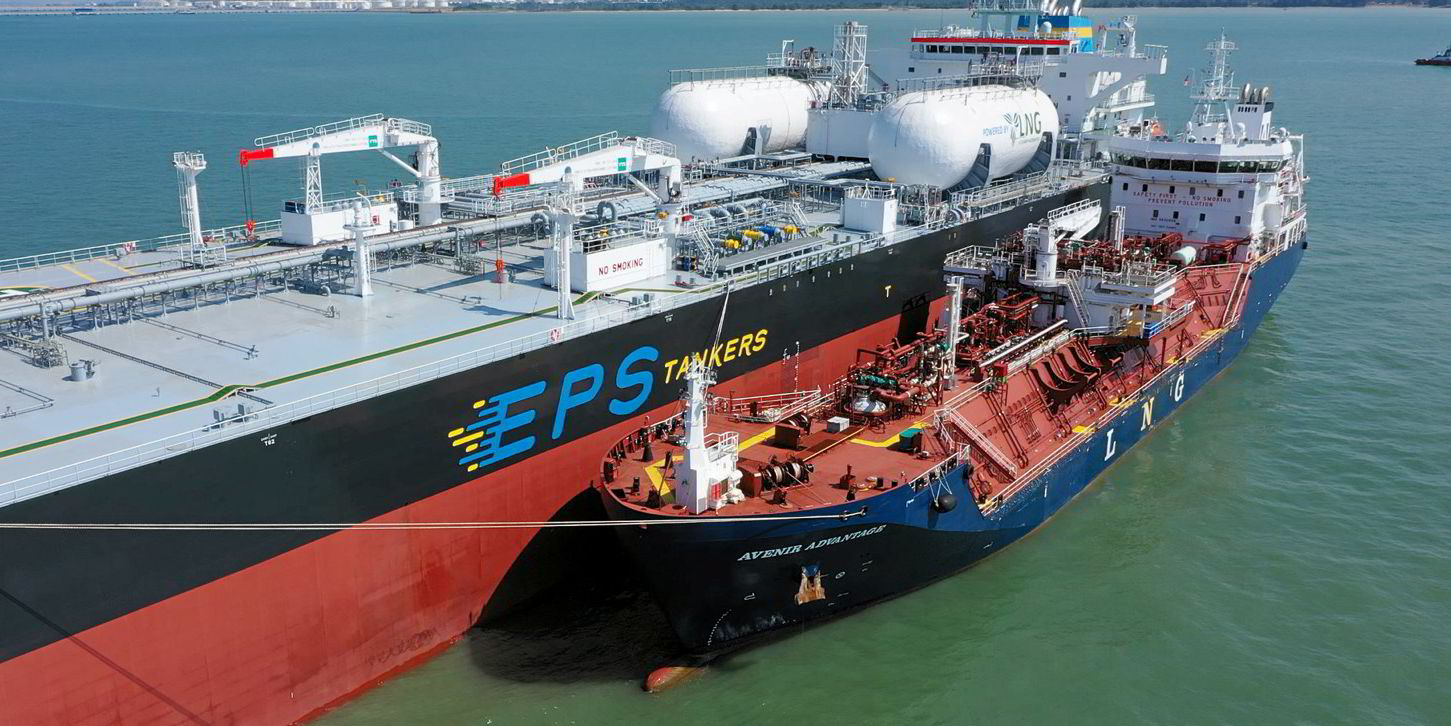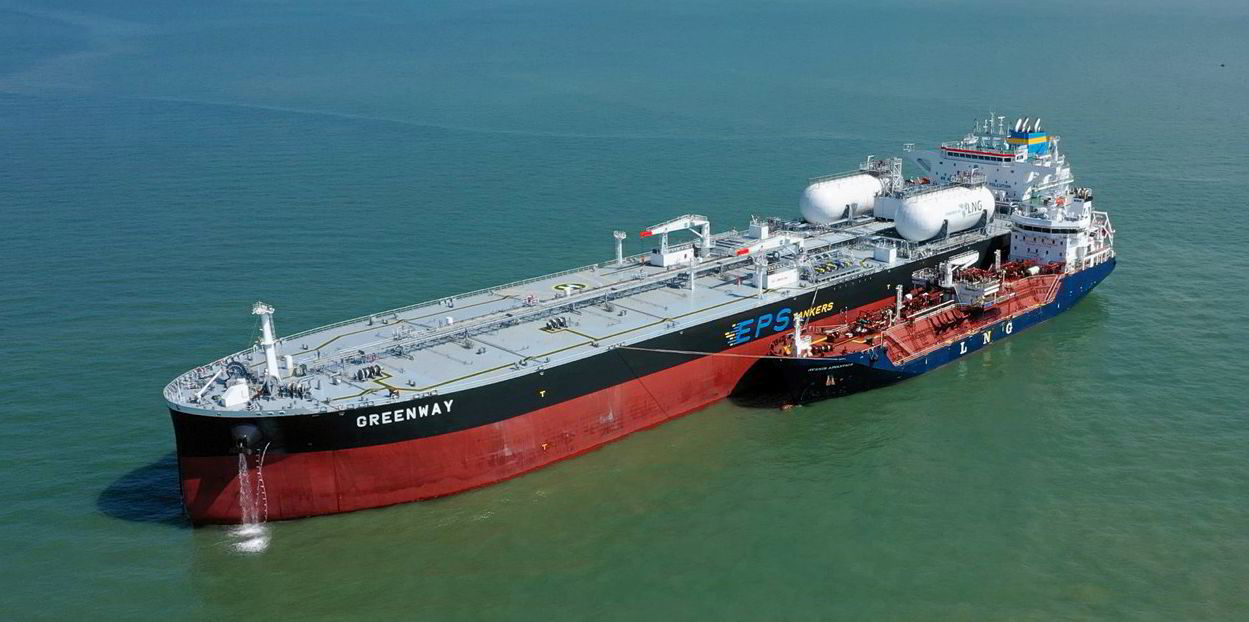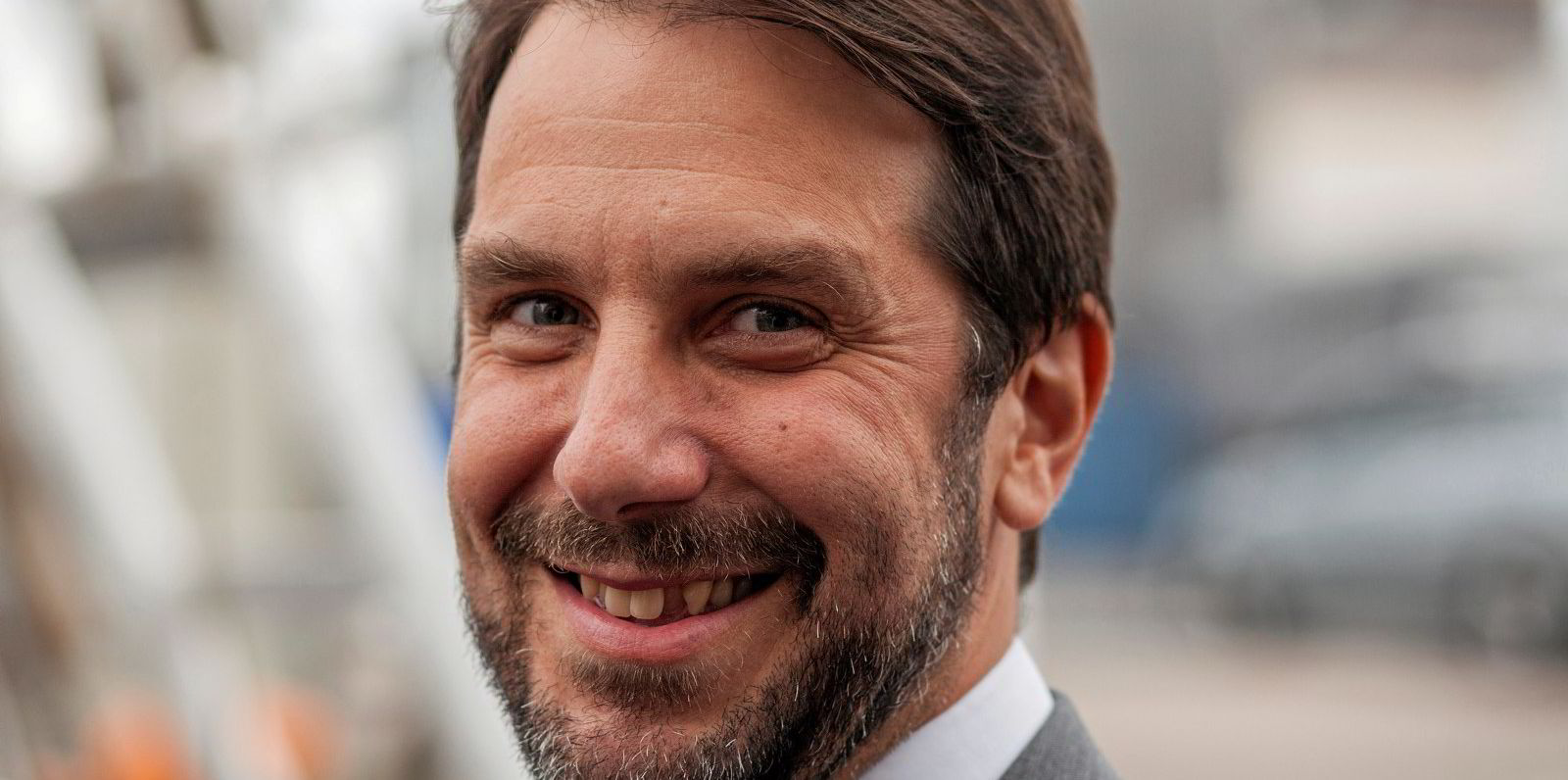Eastern Pacific Shipping’s first LNG-powered suezmax tanker has completed its first bunkering operation off Malaysia.
The Singapore company used the opportunity to share with TradeWinds some insights into why it decided to put the vessel in the spot market rather than out on long-term charter.
Bunkering a ship via a specially designed LNG bunker vessel is rapidly becoming commonplace in a growing number of locations around the world.
But what made this month’s first fuelling of the 158,000-dwt Greenway (built 2022) unique was that Eastern Pacific is deploying it in the spot market, not on a dedicated route where LNG supplies are guaranteed.
The decision to opt for the spot market as opposed to long-term charters, which has been the preferred mode of employment for most dual-fuel vessels, was a conscious one, according to Eastern Pacific chief executive Cyril Ducau.
“Together with our time charter customers who partnered with us on dual-fuel vessels, we want to lead by example and take all the necessary steps to lower our carbon dioxide, sulphur dioxide and nitrogen oxide emissions,” he said.
“For our spot trading dual-fuel tankers, we decided to use LNG bunker to show our commitment to the industry’s energy transition.”
Eastern Pacific, an early pioneer of dual-fuel vessels, has built a fleet of 16 LNG-powered container ships, tankers and even bulk carriers. It has a further 39 on order that are due for delivery between now and 2025.
The owner said all of its dual-fuel ships, which are chartered to Equinor, BHP and CMA CGM, are running entirely on LNG.
Securing LNG supply for container ships that operate on regular schedules is easy. Providing guaranteed demand along the route allows suppliers to invest in infrastructure and supply stems.
Even Eastern Pacific’s LNG-fuelled newcastlemax bulkers that are being built against charters to BHP, which will use them to ship iron ore from Australia to China, will routinely pass Singapore, where they will be able to load up on the frigid fuel.
For our spot trading dual-fuel tankers, we decided to use LNG bunker to show our commitment to the industry’s energy transition
— Cyril Ducau
But a tanker operating in the spot market is a different kind of beast. It could potentially sail anywhere in the world.
Eastern Pacific acknowledges that the ability to bunker with LNG in South America, Africa and Australia remains a challenge.
But this is unlikely to affect the operations of its dual-fuel suezmaxes because the ship type does not usually trade to these regions, and LNG supply is readily available in their trading areas of northern Europe, the Mediterranean, the Middle East, Malaysia, Singapore and China.
In addition, the size of these ships facilitates the installation of larger tanks, which give the vessels more endurance when it comes to range.
However, while Eastern Pacific said advancements in LNG bunker infrastructure and supply where it is available have reached a point at which it is not a bottleneck, the lack of availability in other parts of the world makes the fuel difficult for more wide-ranging MR tankers and smaller container ships operating on triangulated routes.
Securing LNG bunkers requires a different set of strategies from securing supplies of conventional fuel oil. It is still a niche market and one that has a very different set of players.

The Greenway was on its delivery voyage from China’s Guangzhou Shipyard International, heading to India, where it is scheduled to load its cargo, ultra-low sulphur diesel fuel for Reliance Industries, when it called at Pengerang, a Malaysian port close to Singapore, to bunker.
The company proudly touted this as a historic moment: the first time a suezmax tanker would fuel up with LNG.
Procuring the 1,500 tonnes of bunkers, which TradeWinds understands was a spot purchase, involved a number of parties. The LNG was purchased through marine fuel supplier Peninsula, which partnered physical supplier Petronas Marine, and delivered to the Greenway by Avenir LNG’s 7,500-cbm Avenir Advantage (built 2020).
That deal, which involved using a bunker supplier, closely replicates a regular commercial deal, although in many ports, oil and gas producers and traders such as Shell, Total and Pavilion deal direct with end-user customers.
Eastern Pacific will take delivery of a second Guangzhou Shipyard-built LNG dual-fuel suezmax — the Starway — in August.
When the Greenway is operating in LNG mode, it can reduce CO2 emissions by about 23%, NOX emissions by about 90% and SOX emissions by 99%. It burns very low-sulphur fuel oil when not using LNG.





